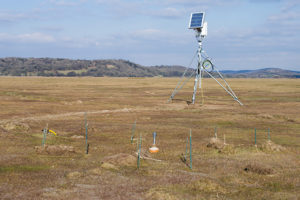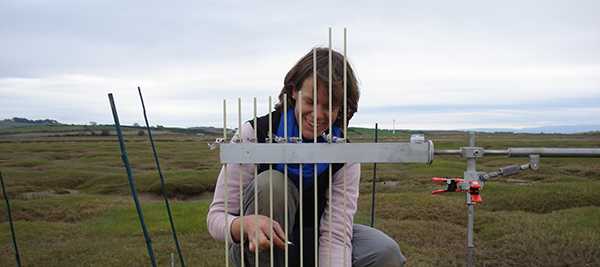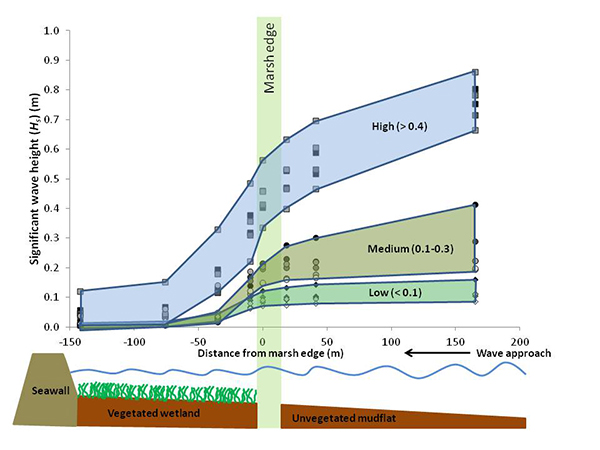The Cambridge Coastal Research Unit (University of Cambridge) is monitoring the sea defence function of saltmarshes at two saltmarsh sites in Morecambe Bay and three in Essex.

The CCRU has successfully installed their monitoring equipment for water levels and waves in the autumn of 2012 and data has been transmitted to Cambridge since then continuously via a mobile phone telemetry system that allows the team to get a quick sense of conditions across the marshes. Side-on vegetation photography against a contrast-coloured background plate has been used to capture the change in vegetation density, height, and structure, between the wave recording stations. It is the expectation, that, alongside different tidal and wave conditions, changes in those vegetation characteristics over time, as well as differences between sites, explain some of the variability in wave damping.

Alongside these measurements, the team has also installed fixed stations for recording the amount of sediment that is depositing on the marsh surface over time and tracking the degree to which that sediment contributes to surface elevation change – a key indicator for how well these marshes are keeping pace with sea level rise.

